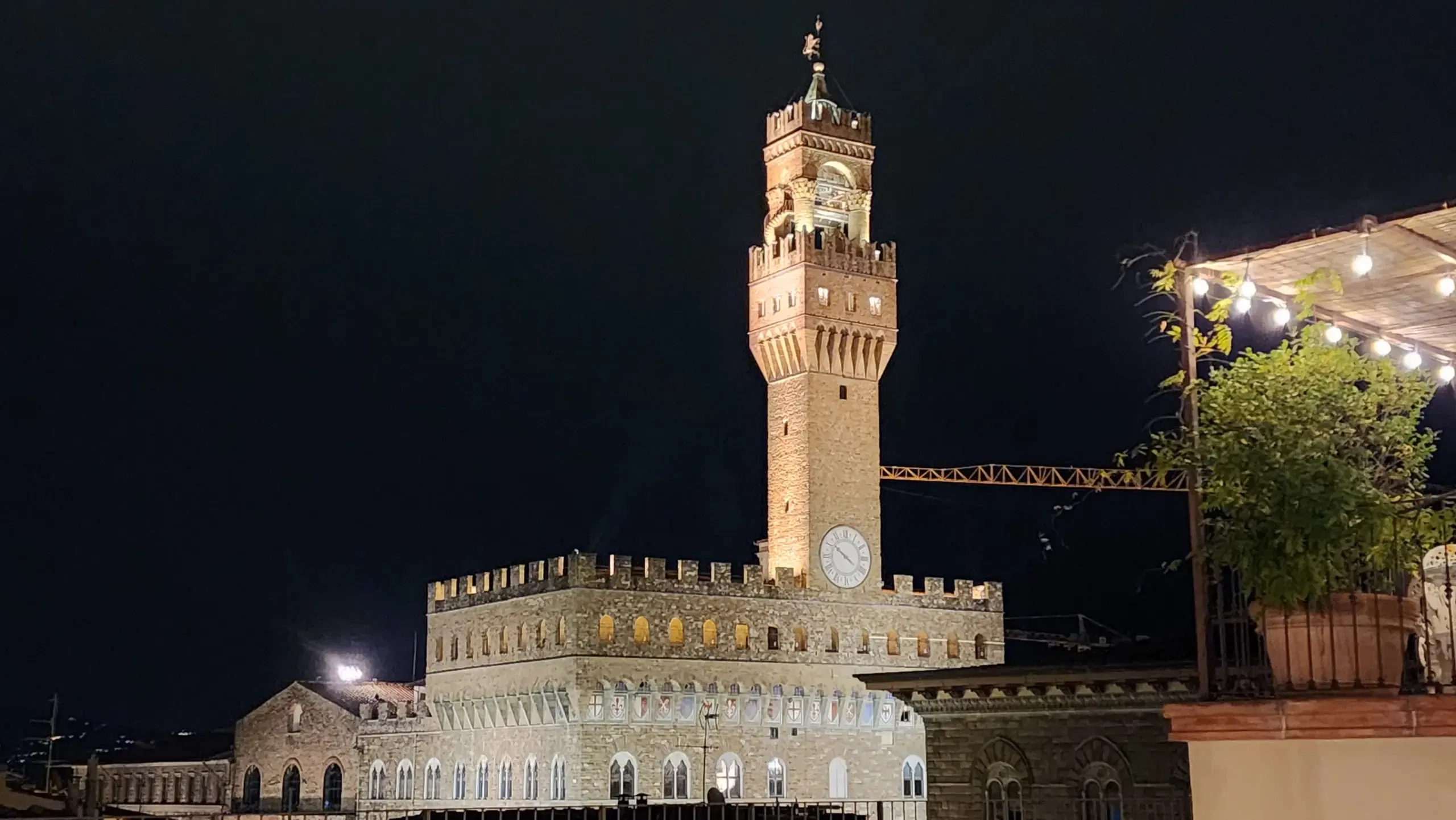Ciao, history buffs and architecture enthusiasts! ✨ Today, I’m taking you to the iconic Palazzo Vecchio, Florence’s historic town hall and a treasure trove of art, culture, and history. From its fortress-like exterior to its lavishly adorned interiors, Palazzo Vecchio is a masterpiece that stands at the heart of Florence, overlooking the bustling Piazza della Signoria. Join me as we uncover the stories and splendor of this extraordinary landmark.
A Brief History of Palazzo Vecchio
Built in 1299, Palazzo Vecchio served as the seat of the Florentine Republic’s government and has witnessed centuries of political and cultural evolution. Designed by Arnolfo di Cambio, the same architect behind Florence Cathedral, its sturdy, fortress-like structure symbolizes the city’s power and independence during the Middle Ages.
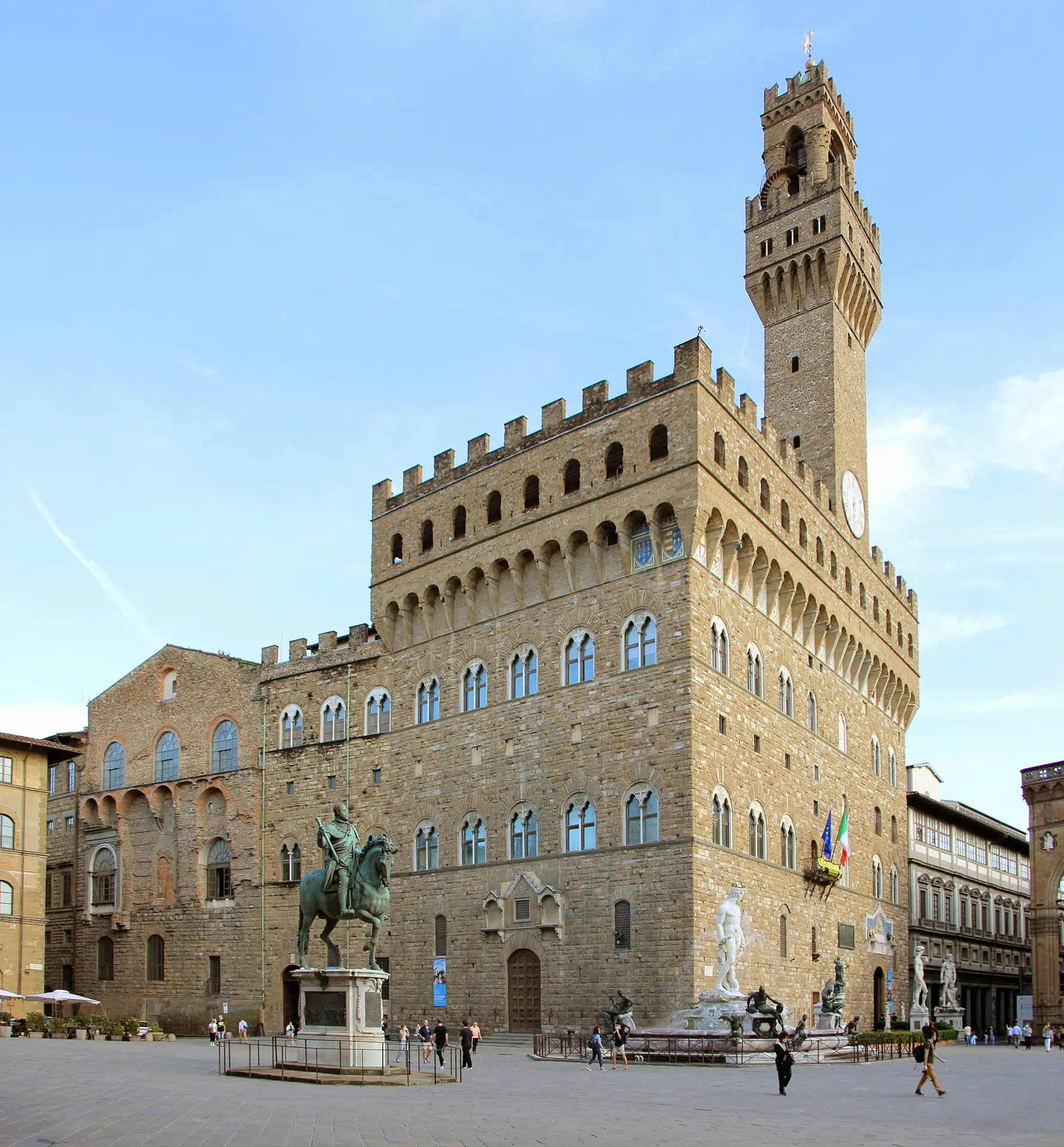
In the 16th century, Cosimo I de’ Medici moved in and transformed it into a grand ducal palace. This renovation, led by architect Giorgio Vasari, added the lavish interiors that we admire today. Although Cosimo later moved the ducal residence to the Palazzo Pitti, Palazzo Vecchio remains a symbol of Florence’s enduring legacy.
The Stunning Cortile di Michelozzo
Your journey into Palazzo Vecchio begins at the magnificent Cortile di Michelozzo (Michelozzo’s Courtyard). Designed by Michelozzo Michelozzi in the 15th century, this courtyard is a serene and breathtaking introduction to the palace’s grandeur.
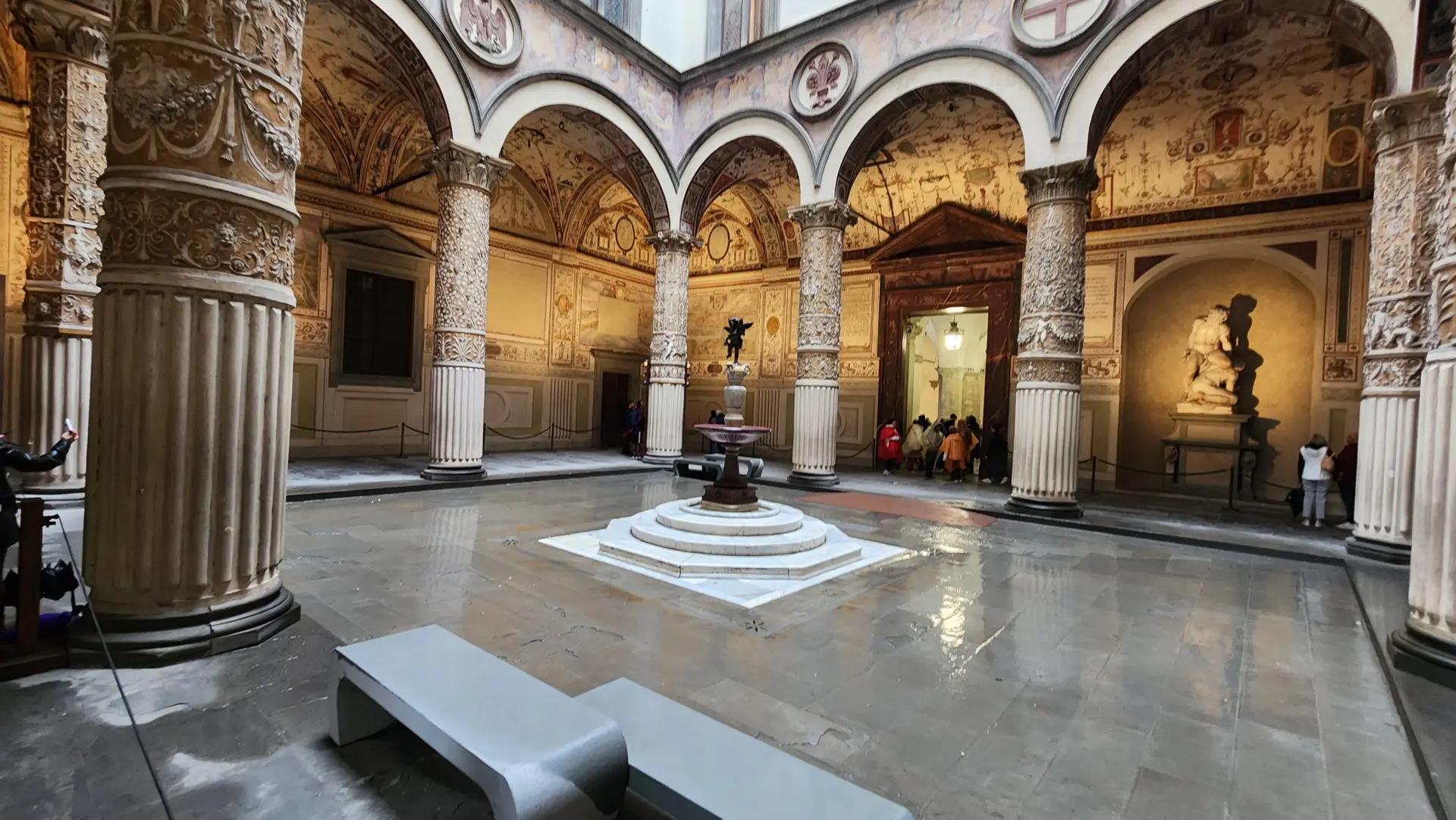
As you step inside, you’ll notice the elegant arches supported by intricately decorated columns. The walls and ceilings are adorned with vibrant frescoes by Giorgio Vasari and his team, celebrating Florence’s alliances and the cities under Medici rule. Each fresco tells a story, blending artistic beauty with historical significance. At the center of the courtyard stands the Fountain of the Putto, a delightful bronze cherub holding a dolphin, sculpted by Andrea del Verrocchio – Leonardo da Vinci’s teacher. The fountain, framed by lush greenery, adds an element of tranquility to this otherwise grandiose space.
Highlights of Palazzo Vecchio
The Tower (Torre d’Arnolfo)
The towering Arnolfo Tower rises 311 feet above the city, offering one of the best panoramic views of Florence. Climbing the narrow staircase to the top is well worth the effort, as you’re rewarded with breathtaking vistas of the city’s rooftops, including the Duomo and Ponte Vecchio.
The Salone dei Cinquecento
This grand hall is the largest room in Palazzo Vecchio, measuring a staggering 54 meters long and 23 meters wide. Commissioned by Savonarola in 1494 and later redesigned by Vasari, it boasts magnificent frescoes depicting Florence’s military victories, as well as sculptures by Michelangelo and Bandinelli.
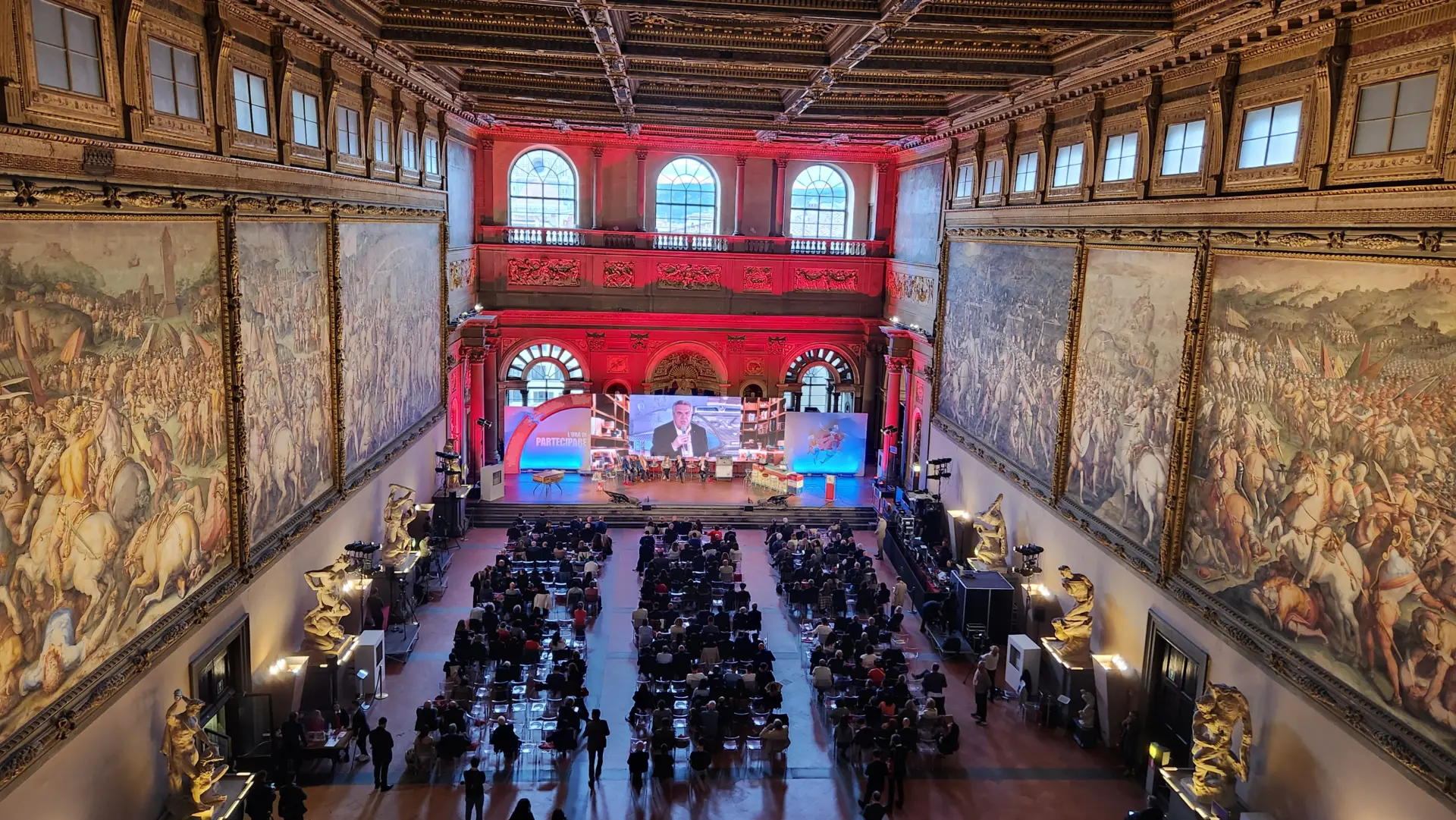
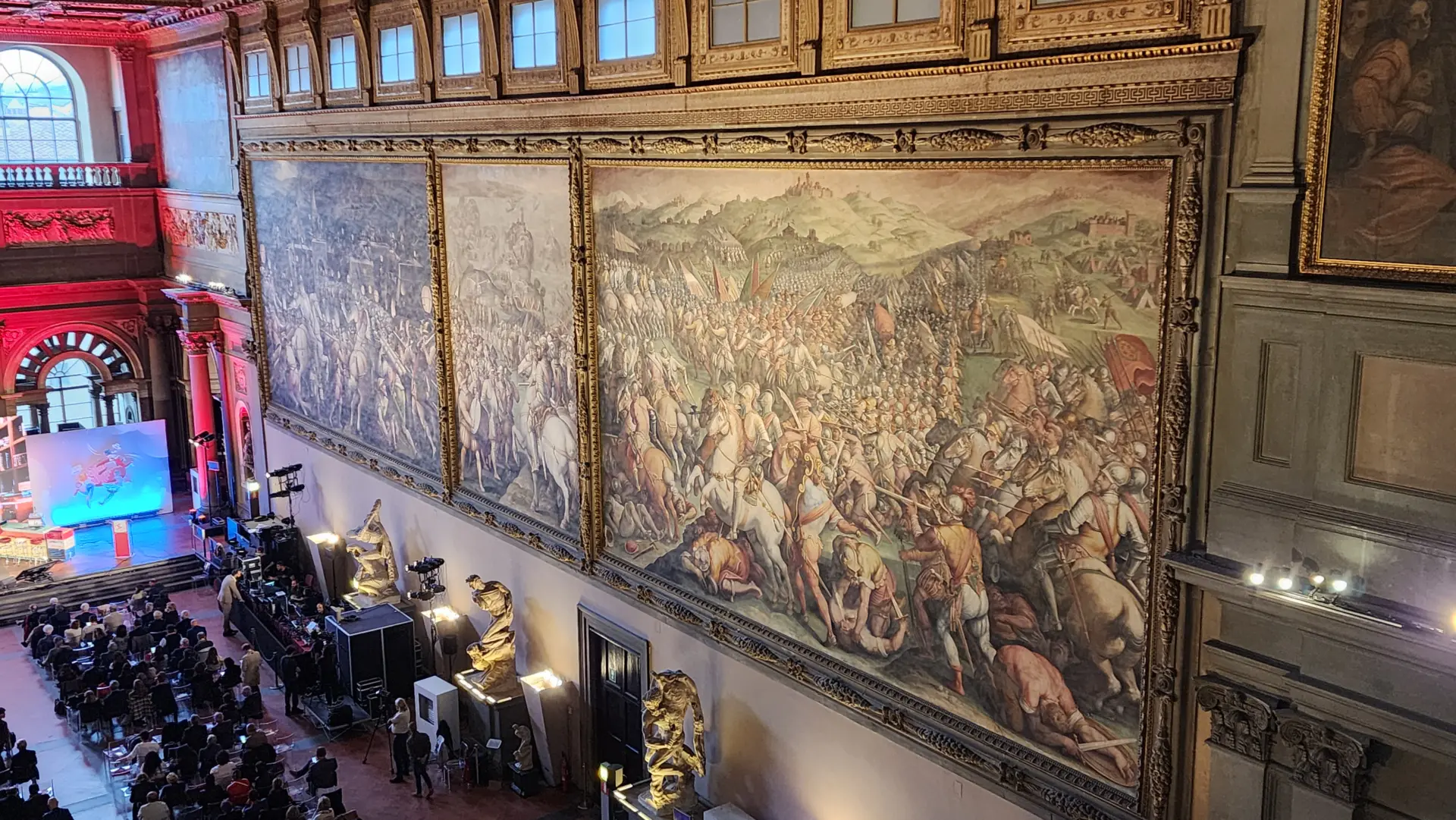
The Medici Apartments
Step into the private quarters of Cosimo I and his wife, Eleonora di Toledo, and be transported to a world of opulence. Highlights include the Room of Hercules, decorated with mythological frescoes, and the Chapel of Eleonora, featuring stunning religious frescoes by Bronzino.
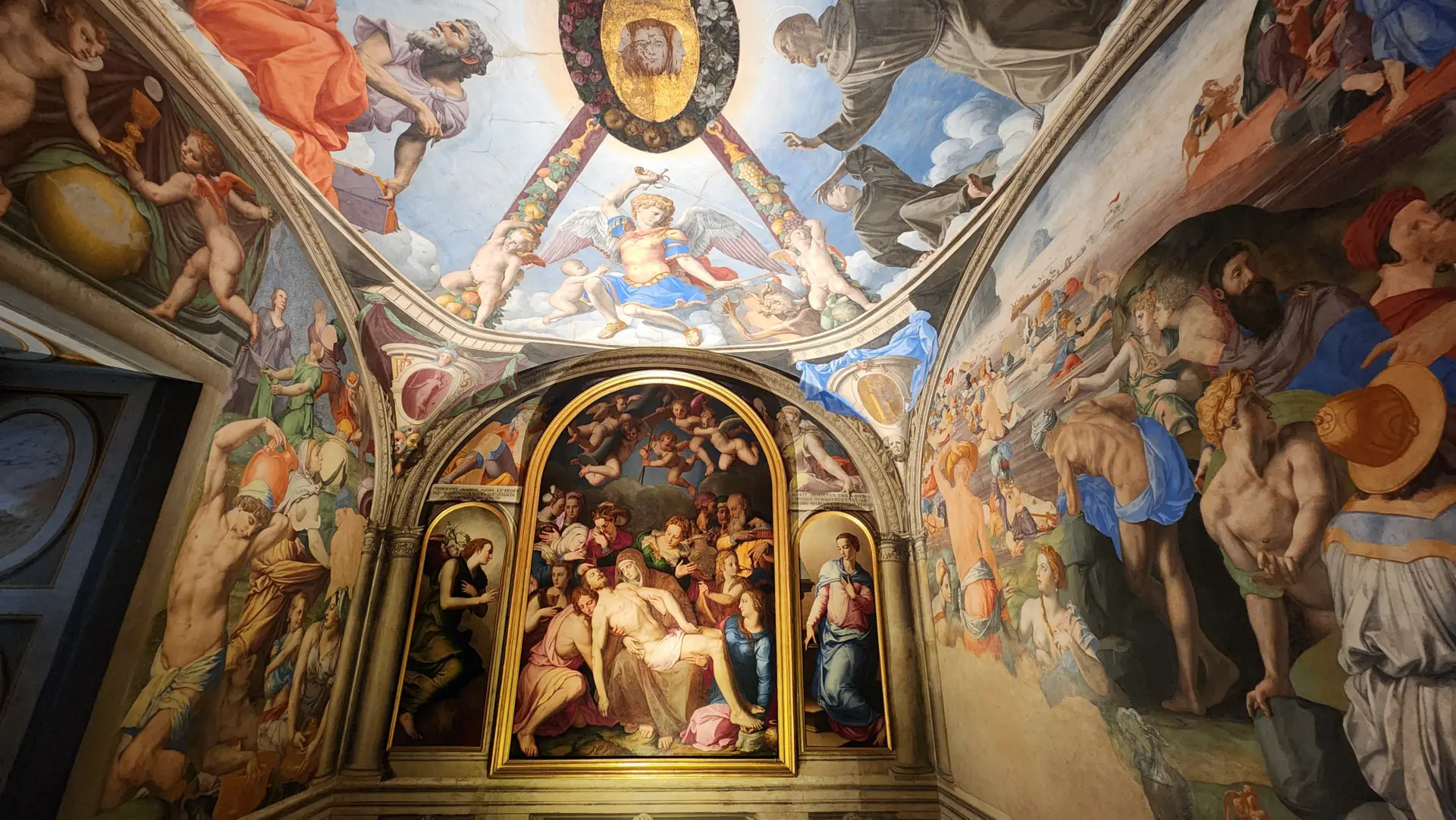
The Hall of Maps (Sala delle Carte Geografiche)
This fascinating room houses a collection of 53 maps painted on leather panels, showcasing the known world as it was in the 16th century. The intricate detailing is a testament to the Medici’s thirst for knowledge and exploration.
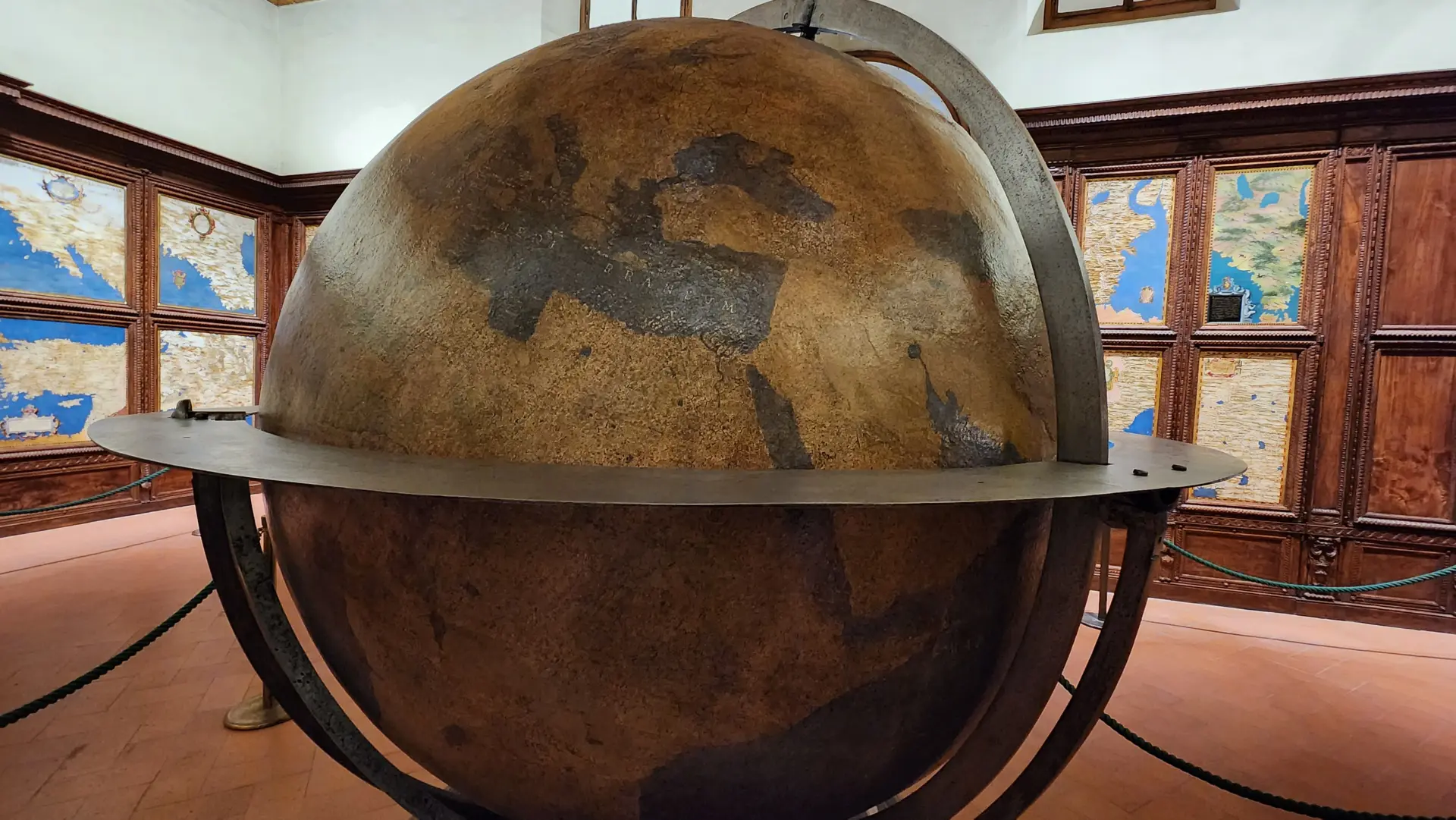
Dante’s Death Mask
Tucked away in Palazzo Vecchio is the intriguing death mask of Dante Alighieri, Florence’s legendary poet. Though its authenticity remains a topic of debate, the mask is thought to represent the likeness of Dante after his death in 1321. The mask serves as a poignant reminder of Florence’s rich literary history and its connection to one of the greatest poets of all time. For lovers of art and literature, this is a small but significant treasure within the palace.
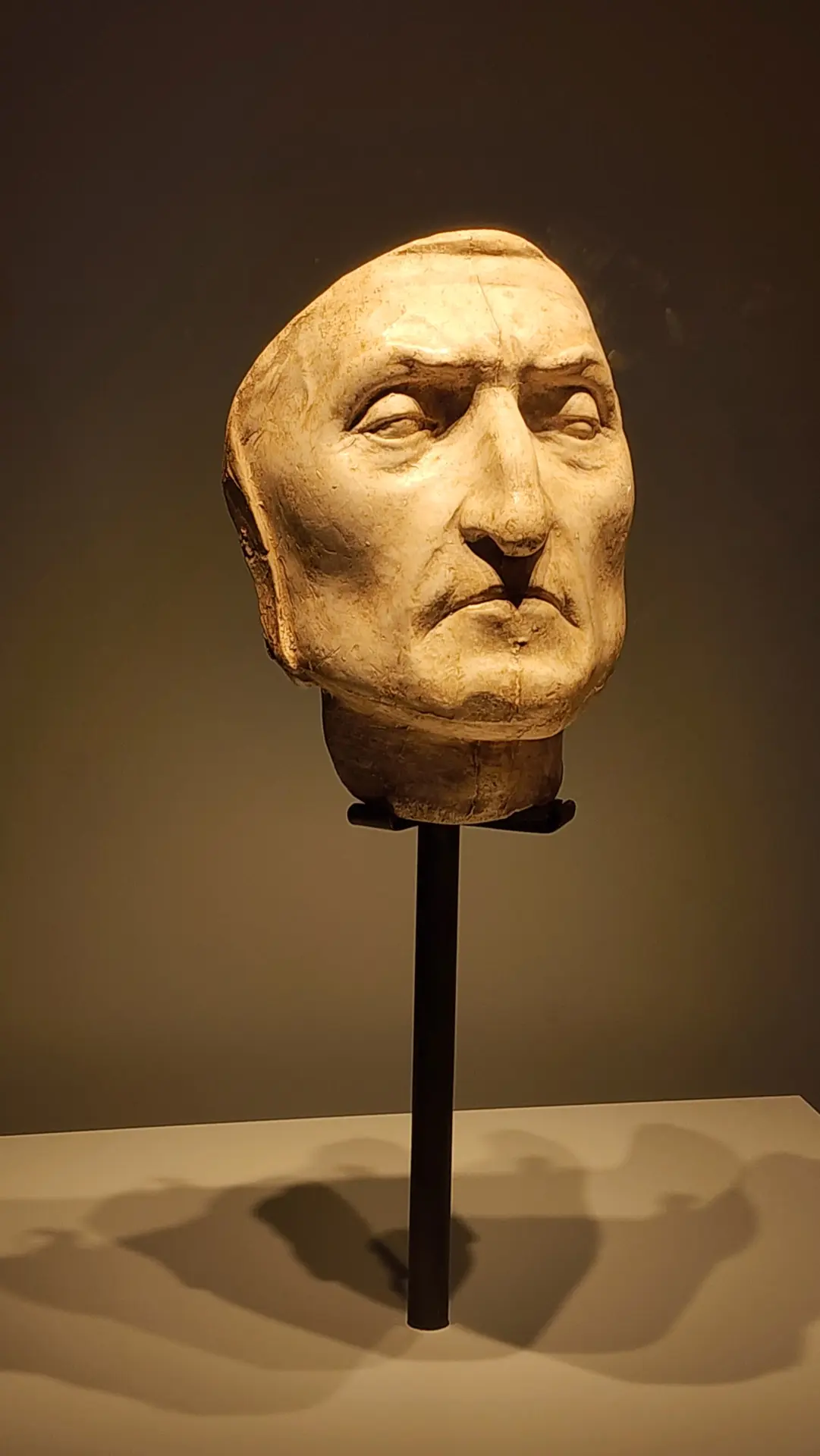
The Attic
Hidden above the Salone dei Cinquecento, the attic is a fascinating glimpse into Renaissance engineering. Its wooden trusses, meticulously crafted to support the grand hall’s roof, reflect the ingenuity of the period. Exploring this often-overlooked space offers a rare opportunity to appreciate the architectural brilliance behind the grandeur of Palazzo Vecchio.
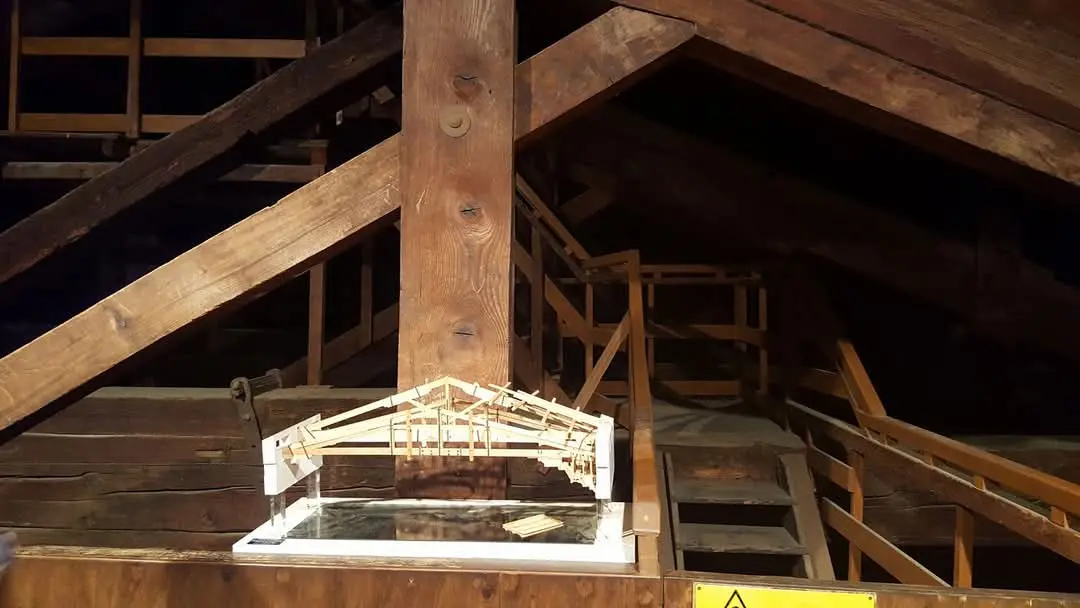
Practical Information for Your Visit
- Location: Piazza della Signoria, 50122 Florence, Italy.
- Opening Hours:
- Open daily from 9:00 AM to 7:00 PM (Thursdays until 2:00 PM).
- Closed on public holidays like Christmas and New Year’s Day.
- Tickets:
- Standard entry tickets are available, with separate fees for access to the tower and guided tours.
- Combined passes are a great option if you plan to explore other Florence landmarks.
- Accessibility: The palace is partially wheelchair accessible, but the tower climb may not be suitable for everyone.
Tips for Visitors
- Book Tickets in Advance: Palazzo Vecchio is a popular attraction, so purchasing tickets ahead of time can save you from long lines.
- Take a Guided Tour: A guide can help you fully appreciate the history and art of this incredible site.
- Visit at Sunset: Climbing the tower during golden hour offers stunning views of Florence bathed in warm light.
Final Thoughts
Palazzo Vecchio isn’t just a building; it’s a storybook of Florence’s history, art, and power. From the Medici’s sumptuous apartments to the awe-inspiring Salone dei Cinquecento and the tranquil beauty of the Cortile di Michelozzo, every corner of this palace whispers tales of the city’s grandeur. Whether you’re an art lover, a history buff, or just looking for incredible views, Palazzo Vecchio is a must-visit destination in Florence.
Until next time, keep finding your sparkle, everywhere! ✨🏛️
Xoxo,
Bubbly 🎈

